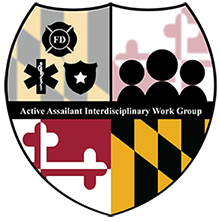Planning
Resources listed on this page can be used by emergency management and public safety officials in a variety of planning efforts related to active assailant incidents. This is not an exhaustive list, but rather a general list of resources to help planners get started on planning efforts. Some resources are more targeted to a specific audience or topic, but still include best practices and general themes that would be applicable to broader audiences as well.
The AAIWG developed the following templates for basic threat assessment, the release of medical information, and authorization for coordination of care which may be customized for use by law enforcement and first responders:
Release of Medical Info Template
Basic Threat Assessment for Mass Violence Template
Coordination of Care Authorization Template
A selection of references, training resources, and videos has been compiled below to assist emergency management and public safety personnel (law enforcement, fire, EMS) with planning aspects related to an active assailant incident.
Interagency Security Committee Policy and Best Practices Guide
While this document is geared toward federal facilities, the best practices identified for prevention, protection, mitigation, response and recovery are applicable to state and local entities as well.
FEMA Planning Considerations for Complex Coordinated Terrorist Attacks
Provides planning considerations specific to complex coordinated terrorist attacks to be used when developing emergency operations plans.
https://ovc.ojp.gov/sites/g/files/xyckuh226/files/pubs/mvt-toolkit/partner-plan.html
The Office for Victims of Crime (OVC)—in coordination with the Federal Bureau of Investigation’s Office for Victim Assistance and the U.S. Department of Justice’s Office of Justice for Victims of Overseas Terrorism—developed this toolkit to help communities prepare for and respond to victims of mass violence and terrorism in the most timely, effective, and compassionate manner possible.
https://www.cisa.gov/publication/active-shooter-emergency-action-plan-guide
This website provides a guidance document and fillable template for developing an active shooter Emergency Action Plan (EAP). These documents are a companion to the video listed above.
https://www.policeforum.org/assets/AssistingVictimsMassViolence.pdf
For this report, the Police Executive Research Forum (PERF) partnered with the National Mass Violence Victimization Resource Center (NMVVRC) to identify the lessons learned by police executives who have experienced a mass violence incident in their jurisdiction. The report draws on the experiences and insights of police executives from five jurisdictions: Charleston, SC; Dayton, OH; Orlando, FL; San Bernardino, CA; and Virginia Beach, VA.
AAIWG ICS Field Operations Guide April 2023
Developed by the AAIWG, this Field Operations Guide (FOG) is designed to aid the initial response elements and command staff responding to an active assailant incident by providing guidance on immediate tasks and scene organization in accordance with the Incident Command System (ICS) and the National Incident Management System (NIMS).

